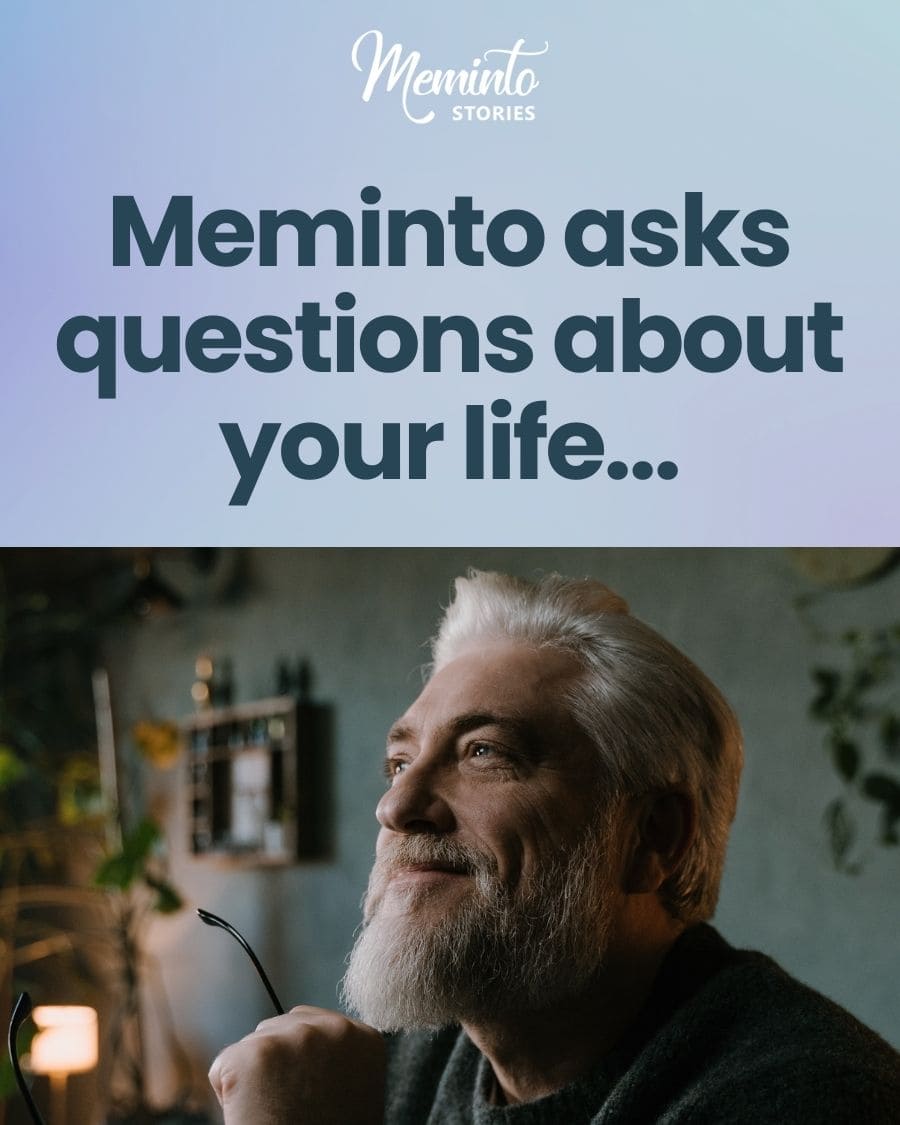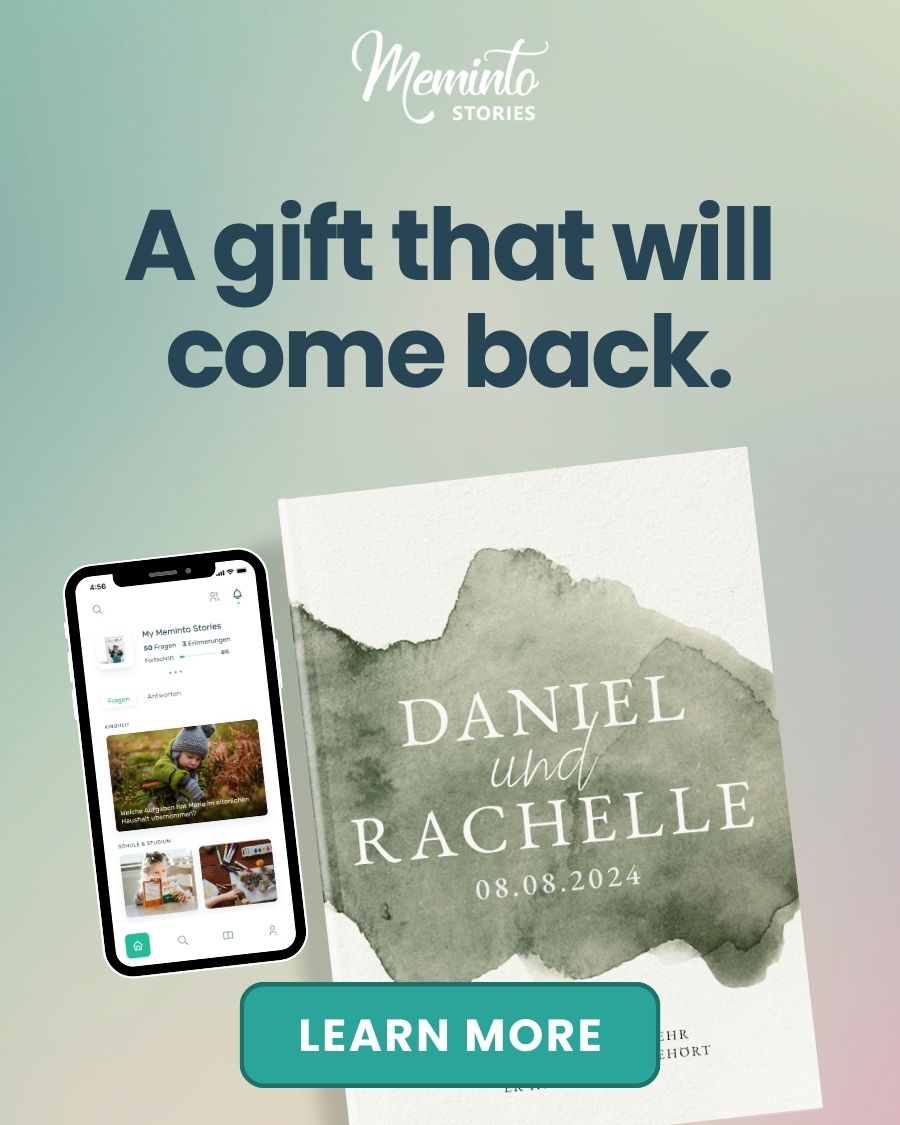If it’s based on your truth, is it still storytelling or something else? This question haunts aspiring memoir writers who sit with their morning coffee, cursor blinking on a blank page titled “My Story.” You know that your life holds moments that have shaped you, lessons that have transformed you, and stories that deserve to be preserved.
The literary world can be confusing. It’s hard to know where your true experiences fit in. The debate between memoir and fiction confuses many writers. But knowing where your story fits will help you write with confidence and purpose.
In this guide, we’ll answer the question, “Is a memoir nonfiction?” We’ll also explore the main differences between memoir and fiction. Lastly, we’ll share tips to help you write your story confidently.
Is a memoir nonfiction?
The short answer is yes.
The definition of a memoir is simple: memoirs are a form of narrative nonfiction. They tell real stories about real events that happened to real people. They occurred to you.
When librarians shelve your finished memoir, it won’t go with novels in the fiction section. Check the nonfiction section. You’ll often find it under biography, autobiography, or personal narrative.
Being nonfiction doesn’t mean your memoir has to read like a boring textbook, though. The word “narrative” matters because you’re telling a story, not listing facts. Your story.
Think about any memoir you’ve loved reading. It felt like a story, didn’t it?
That’s exactly what you’re aiming for with your own life experiences.
Maria from Germany thought her life wasn’t worth writing about. I mean, who wants to read about being a housewife in post-war Germany, right?
But something incredible happened when she started putting words on paper. She told us: “I initially wanted to document my life for my children. Thanks to Meminto’s insightful questions and prompt support, my story flourished into over 300 pages across two volumes.”
Turns out her kids couldn’t put it down, and neither could her grandkids.
Memoir vs. Fiction: Understanding the key differences
Okay, so here’s where people get all twisted up. The memoir vs fiction debate shouldn’t be that confusing, but somehow it is.
The job of fiction writers is to make stuff up from their imagination. They sit down and create entire worlds, people, and situations from thin air. Memoir writers are exploring their lives to understand what happened to them. Both can tell incredible stories, but they’re coming from entirely different places.
| Feature/Variable | Memoir | Fiction |
| Source Material | Real events from your life | Imagination and invented scenarios |
| Characters |
Real people from your life (with permission) |
Completely invented characters, even if inspired by real people |
| Truth Requirements |
Must be true to your experience; emotional honesty is key |
Complete creative freedom to invent and change |
| Memory Flexibility |
Can dramatise dialogue and scenes while staying true to the spirit |
There are no memory constraints; you can make up everything |
| Bookstore Classification | Nonfiction section (narrative nonfiction memoir, biography,autobiography) | Fiction section |
| Point of View | Almost always first person | First, second, or third person options |
| Scope | Usually focuses on a specific period or theme in your life | Can cover any timeframe or scope imaginable |
| Writing Techniques | Uses fiction techniques (dialogue, scenes) but within truth limits | Full access to all literary devices and techniques |
| Reader expectations | Readers expect authenticity and true experiences | Readers expect an engaging story, regardless of truth |
| Legal/Ethical Considerations | Must consider the impact on real people mentioned | Can protect identities by changing details completely |
| Publishing Requirements | Author credibility is often important | Focus on story quality and writing craft |
| Emotional Approach |
Revelation; exposing emotional truth directly. |
Concealment; hiding emotional truth within the story |
Memoir
Memoir comes from things that happened to you. Every single thing gets pulled from real life, real people, real feelings you had. It’s messy because life is messy.
You sit down with your memories and try to figure out which ones matter. Not everything that happened to you is worth putting in a book. Your job is to choose the moments that mattered. These are the times that taught you lessons and still stir feelings when you recall them.
With memoir, you can take readers right inside your head during those big moments. You lived it, so you know exactly what it felt like when your dad called with that terrible news or when you held your baby for the first time. Nobody else was inside your head that day, but you can bring them there through your writing.
Werner from Germany gets this. “With one question per week, I was able to record my life story. That was a lot of fun! I am proud of my book and am already preparing the second book.” He didn’t try to make his life sound more exciting than it was. He shared his true stories honestly, and people loved them because they felt real.
But the downside is you can’t cheat. You can’t change how your ex-husband acts, and you won’t think of a perfect comeback later. You’re left with what happened, even if it’s embarrassing or doesn’t end well.
Different Types of Memoir (And Where They Fit)
Your memoir doesn’t have to be the story of your entire life from birth to whatever age you are now. Actually, most good memoirs don’t try to cover everything. They pick one specific period or relationship or theme and really dig into that.
- Coming-of-Age Memoirs
These aren’t genuinely about getting older. They’re about the times you learn something important about yourself or the world. Those revelations can change everything. It could happen at eight or at thirty.
Maybe it’s the day you figured out your parents didn’t have all the answers. It may have been when you had to make a choice that revealed who you truly are. Or when you stood up for something even though everyone around you thought you were crazy.
The best coming-of-age memoirs show that moment when everything feels unstable. When you realize the story you’d been telling yourself about your life wasn’t true.
- Grief Memoirs
These memoirs explore how you dealt with losing something or someone important. Whether it’s death, divorce, illness, or other significant losses, grief memoirs help readers understand your path through pain.
Barbara from Germany created this type of memoir with a Meminto Life Book. “We started when my mother was still alive and we made a lot of audio recordings. Now I listen to it from the book every time I miss her.” These stories often become lifelines for others facing similar struggles.
- Family Memoirs
Family memoirs try to capture the complicated, messy, beautiful reality of family relationships. They’re about preserving the stories that get passed down at family dinners, but they’re also about trying to understand why families work the way they do.
Willi from Germany wrote this kind of memoir. He says, “I wrote my Meminto Stories book mainly as a keepsake for my grandchildren and great-grandchildren. Not only was it a breeze to do, but it was a lot of fun.” Willi wasn’t trying to make his family sound perfect. He was trying to capture what it was really like to be part of his family.
4. Travel Memoirs
Focus on how places and journeys changed you, not where you went. You backpacked across Europe and found your independence. Or, you moved to a new country and uncovered strength you never knew you had.
These memoirs show personal transformation through movement, culture, and adventure. The Meminto Travel Book helps capture not where you went, but who you became along the way.
5. Career Memoirs
These aren’t just about jobs. Career memoirs explore what happens when you spend most of your life doing something, and how that shapes who you become.
You might have climbed the corporate ladder only to discover that success felt nothing like you thought it would, or worked in a field everyone thinks is glamorous and learned about the unglamorous reality behind the scenes.
Good career memoirs help readers understand what it feels like to make the compromises that work demands, and how those decisions ripple through the rest of your life in ways you never expected.
- Spiritual Memoirs
Spiritual memoirs are for writing faith, doubt, meaning, and purpose. These memoirs might document your childhood in a particular religious community, a crisis that shook your beliefs, or a moment of spiritual awakening that changed everything. They could cover leaving your faith behind, converting to a new religion, or rediscovering beliefs you thought you’d lost.
Lynn from Canada wrote this kind of memoir. “I have experienced a lot in my 70 years and spent a long time in the Philippines serving with a charity organization. I have recorded my experiences and stories in my own book.” Lynn’s memoir isn’t just about the work she did. It’s about what that work meant to her and how it changed her understanding of her place in the world.
Meminto offers a specialized Life Book for Christians, recognizing that faith stories deserve their own space and consideration.
How Memoir Works
Memoir tells stories like novels, but it stays rooted in your own experiences. You’re not just listing what happened; you’re creating scenes that bring readers into your world.
Take Maria from Germany. She didn’t start her memoir with “I was born in 1945.” She could have started with the scent of her grandmother’s kitchen or the sound of her father’s voice when he returned from work. Her story “grew into over 300 pages in two volumes” because she viewed her memories as scenes in a book.
You build tension by showing conflict, even if that conflict is in your head. You use dialogue to bring people to life, even if you can’t remember exact words from decades ago. You focus on moments that changed you, not every single thing that happened.
Werner from Germany found this worked well for him. “With one question per week, I was able to record my life story. That was a lot of fun! I am proud of my book.” He didn’t try to remember everything at once. He let each memory build on the last, making a story that felt complete and meaningful.
The key is picking which memories matter most and letting them tell their own story.
Memoir Examples
Some of the most powerful memoirs show how ordinary people turn personal experiences into stories that connect with millions of readers. These examples demonstrate how specific events become universal stories when told with honesty and skill.
- Educated by Tara Westover could have been just another story about someone who grew up poor and made it to college. Instead, it shows readers what it costs to leave behind the family and community that shaped you. Westover captures what it feels like to discover that everything you thought you knew about the world might be wrong, and how painful it can be to outgrow the people who love you.
- Wild by Cheryl Strayed isn’t really about hiking. Strayed spends most of the book walking through the wilderness, but the hiking is just the framework for exploring what happens when your life falls apart completely. Most people have never hiked 1,100 miles, but most people have had moments when they felt like their life was totally out of control.
- The Year of Magical Thinking by Joan Didion takes losing someone you love, which is one of the most universal human experiences, and shows readers exactly what that kind of grief looks like from the inside. Didion doesn’t try to make her experience more dramatic than it was. She describes it with brutal honesty, which helps other people feel less alone in their own losses.
Fiction
Fiction is the complete opposite. Everything in fiction comes from the writer’s imagination. Sure, they might find inspiration in real experiences, but in the end, they’re making things up.
Fiction writers start with a complete lack of ideas. They choose their characters, the problems they will face, and how it all ends. Want your main character to be a detective in 1920s Chicago? Fine. Want them to be a space explorer in the year 3000? Also fine. It’s all up to you.
And if you’re writing fiction, you can mess with reality whenever you need to. Want your character to run into their ex-boyfriend at the perfect moment for drama? Make it happen. Want to give them a snappy comeback that sounds brilliant? Go ahead and write it, even though no real person would ever think that fast.
The challenge with fiction is making it feel real even though everyone knows you made it up. Readers want to relate to your characters and care about their journeys, even if they aren’t real.
Types of Fiction
Fiction writers have countless ways to tell their stories, but most fall into recognizable categories that readers love and expect. Each type has its audience, its own rules, and its way of connecting with people. Knowing these differences helps you figure out what kind of story you want to tell and who you’re writing for.
- Literary Fiction
These stories prioritize beautiful language and human truths over mindblowing plots. You’ll find characters wrestling with big life questions, looking at failed marriages, or confronting childhood trauma that still haunts them decades later.
Books like “The Kite Runner” or “Beloved” might not have car chases or explosions, but they stay with you long after you finish reading. These stories dig into what makes people tick, why relationships fall apart, or how past trauma shapes who we become.
2. Genre Fiction
Each category has a loyal fanbase that knows what they want from their reading. Mystery readers love solving puzzles with the detective. Romance fans, yet, crave that happily-ever-after ending they’ve been rooting for.
These readers are loyal but demanding. Romance fans want the couple to be together. Mystery lovers look for clues that point to a satisfying answer. Break these unwritten rules, and you will hear about it in the reviews.
3. Historical Fiction
Writing in this area means being a part-time historian. You need to get the details right but also tell a great story. Your fictional characters should face real historical limits and social rules that shaped lives.
You might set your story during World War II, the Civil War, or medieval times. But, you can’t change history to suit your plot. If your character is a woman in 1850, she can’t vote or own property in most places. The historical constraints become part of your creative challenge.
- Young Adult Fiction
These books show the intensity of being a teenager. Emotions feel crucial, and every decision seems to carry the weight of the world. Your protagonist deals with common challenges of growing up. Supernatural or dystopian elements often make these feelings stronger.
YA stories tackle real teen issues, but often with higher stakes. Your protagonist may face typical high school drama. But they could also be battling vampires or leading a revolution. The emotions feel huge because that’s how everything feels when you’re seventeen.
5. Contemporary Fiction
Your characters share a world with your readers. They deal with modern problems such as social media anxiety, student debt, and online dating issues. The setting feels familiar, so readers might think they could bump into your protagonist at Starbucks.
These stories reflect current issues and the complexities of today’s world. Your characters focus on Instagram likes instead of writing letters. They navigate relationships using dating apps. The setting feels familiar because it’s the world your readers live in.
How Fiction Works
Fiction writers get to play god with imaginary people. You bring characters to life from thin air. Readers care if they live or die, even though these people only exist in your imagination.
The strange thing about fiction is that readers know it’s all made up, yet they still want it to feel real. They want to feel anxious during your main character’s job interview or upset when the villain does something awful. Your job is making imaginary people feel so real that readers forget they’re not.
Fiction gives you complete control. Your character could have the ideal comeback in a fight, bump into their ex when needed, or crack the case before it’s too late to help everyone. You decide who gets hurt, who falls in love, and how everything ends.
But that freedom comes with responsibility. Even made-up stories have to make emotional sense. Your characters need good reasons for what they do, and your plot can’t fall apart halfway through. Readers enjoy magic and time travel, but they don’t like characters acting without reason.
Practical tips for aspiring memoir writers
The memoir writing genre can feel overwhelming when you’re staring at an entire lifetime of experiences. These practical strategies will help you turn your memories into a story that resonates with readers.
- Start with your most powerful memory, not your birth
Many people believe they need to start at the beginning with “I was born on…” and work their way through every year. This is a great way to bore your readers to death and make yourself give up halfway through.
Instead, start with the memory that still gives you chills. The one that still makes you angry or sad or happy when you think about it. That emotional charge is what will hook your readers. Once you’ve got them invested, you can fill in the background stuff.
Gail from the USA figured this out. “I’ve been writing my life story since I was in my 20’s. Now I can share my stories in a lovely printed book, thanks to ‘copy & paste’ and the Meminto blank book option. I’m already working on my second book!”
- Be honest, but be kind
Writing a memoir means sharing stories about the people in your life. This includes your family, friends, ex-partners, and colleagues. You have every right to tell your truth, but you also need to be thoughtful about how you do it.
Being honest doesn’t mean being cruel. You can talk about tough relationships and personal setbacks without hurting those involved. Focus on your own experience and what you learned rather than trying to settle scores.
- Write in scenes, not summaries
Instead of saying, “My divorce was difficult,” share a moment that shows that struggle. It could be the morning you woke up on your own couch or the afternoon you had to tell your kids why things were changing.
Scene-based writing makes your memoir feel immediate and engaging. It transforms personal history into a compelling narrative that readers can experience alongside you.
- Get help when you need it
Writing about your entire life can feel overwhelming. Many successful memoir writers use guided approaches to stay motivated and organised.
Michael from the USA discovered this when his son gave him a push. “I didn’t know how to begin. Then he gave me a Memento for Christmas, and I was able to write down everything that came to mind in just a few weeks.” Breaking the project into smaller pieces made it manageable, rather than impossible.
- Use all your senses to bring memories to life
Don’t just tell readers what happened. Instead, help them experience what it was like to be there. What did your childhood kitchen smell like? What did your mother’s laugh sound like? How did the hospital waiting room feel against your skin?
Details like this make your memories vivid and real for readers. They help people understand not just what you went through, but what it felt like.
- Don’t try to include everything
You’ve lived a full life, but your memoir doesn’t need to cover every single year. Pick the stories that serve your main theme or show the transformation you went through.
Karl from Germany learned this when he worked on his community’s history. “We used Meminto as software to write a flexible, individual book. It worked with remarkable efficiency, enabling us to print 300 books at the same time. That was 25 large and heavy boxes, a project that was particularly nice!” He didn’t try to capture every single detail. He focused on what actually mattered.
Ready to start writing your true story?
Your memoir matters because your experiences and perspective are unique. No one else can tell your story because no one else lived your life. Tell your story, whether it’s about your family or your creative path. Share it with honesty and feeling.
The memoir genre includes various stories. These can be quiet home stories, exciting adventures, spiritual journeys, family sagas, and love tales. What matters isn’t whether your life was “exciting enough” for a memoir, but your willingness to look at it honestly and share what you’ve learned.
Don’t let confusion about genre hold you back any longer. Your memoir is nonfiction, which means it’s real, valid, and waiting to be written.
Start preserving your memories with Meminto’s guided memoir-writing process and join thousands of authors who’ve already begun their journey from memory to memoir.

















